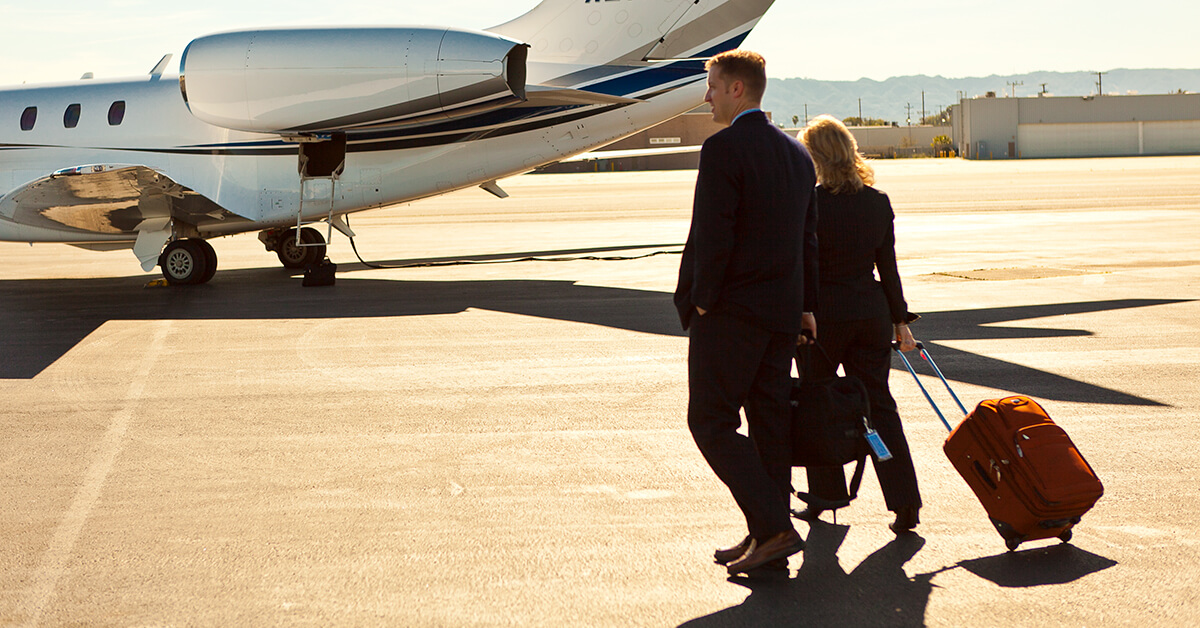
Aug. 21, 2020
New customers driven to business aviation by the pandemic are looking for simplified pricing models, are more environmentally conscious, and require substantial education on the basics of flying charter – but also bring the potential to dramatically expand the industry’s market.
These were some of the takeaways from Friday’s NBAA News Hour discussion about the uptick in first-time passengers and how the industry can capitalize on a shifting landscape that moderator Phil Derner, NBAA’s western regional representative, described as a unique opportunity to establish long-term customers.
“The addressable market is so much bigger, as people who could afford to fly charter last year and didn’t think about it are now considering this option because of the pandemic,” said Allan L. Mann, senior director of safety with Wheels Up. “We’ve already sold 120% of our total 2019 membership sales by the third week in August.”
Generally, these new passengers:
- Prefer mid-size aircraft
- Desire simplified pricing
- Utilize aircraft for personal reasons, particularly to travel to second homes
The latter trend, said Greg Johnson, president and CTO of Tuvoli, LLC, presents both opportunities and concerns. Johnson noted that the booming real estate markets in those cities may be indicative of a larger shift in how people live, driven by the rise in broadband-enabled teleworking. This could permanently create a need for people to regularly fly from former second homes turned primary residences to their places of business.
If the trend is more closely tied to summer vacationing, however, the relatively paltry recovery in business flying, both Part 91 and Part 135, could bring additional headwinds.
“There’s a lot of concern that this fall we’re going to see a drop-off if people aren’t flying to these different family locations,” said Johnson.
One major stumbling block for new customers has been the sometimes-complex pricing structures involved with chartering an aircraft.
“One issue we’ve seen is that the new flyers don’t understand complicated pricing models that include extra charges for things like landing fees, catering and de-icing,” said Joe Moeggenberg, founder and president of ARGUS International, Inc. Moeggenberg said that the industry is adapting by simplifying its approach to pricing to present passengers with more standardized experiences.
New customers also bring concerns about environmental impacts and safety, both operational and as it relates to COVID-19. Alexander H. Beringer, chief operating officer and equity owner of Fair Wind Air Charter, said that retaining customers who “have never heard of Argus, Wyvern or IS-BAO” requires a more relational than transactional business approach.
“It takes a lot more handholding to go from point A to point B and get them to come back and book with us again,” said Beringer. He added that operators need to be proactive in easing passengers’ concerns by providing them with information about carbon offsets, COVID-19 safety policies and crew qualifications.
As business aviation emerges from the pandemic, the growth of charter, and the comparative decline in year-over-year Part 91 operations, won’t necessarily be a mutually exclusive relationship moving forward, noted Jason Middleton, CEO of Silver Air.
“Every aircraft owner begins as a charter customer – that’s the traditional pipeline to ownership – so it’s reasonable to assume there will be new owners coming into the market in the next nine months.”


 International Business Aviation Council Ltd.
International Business Aviation Council Ltd.